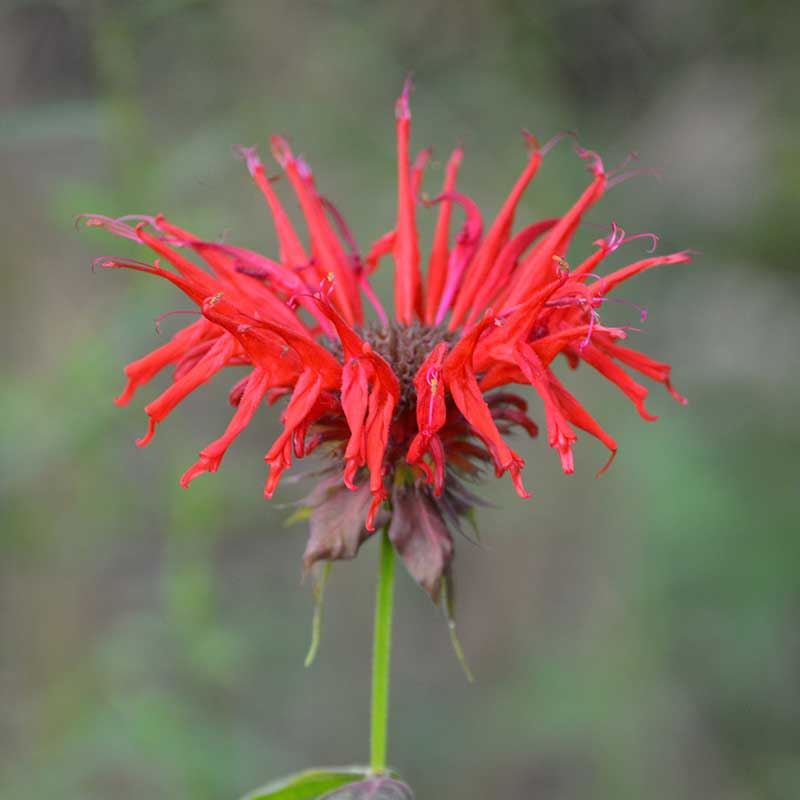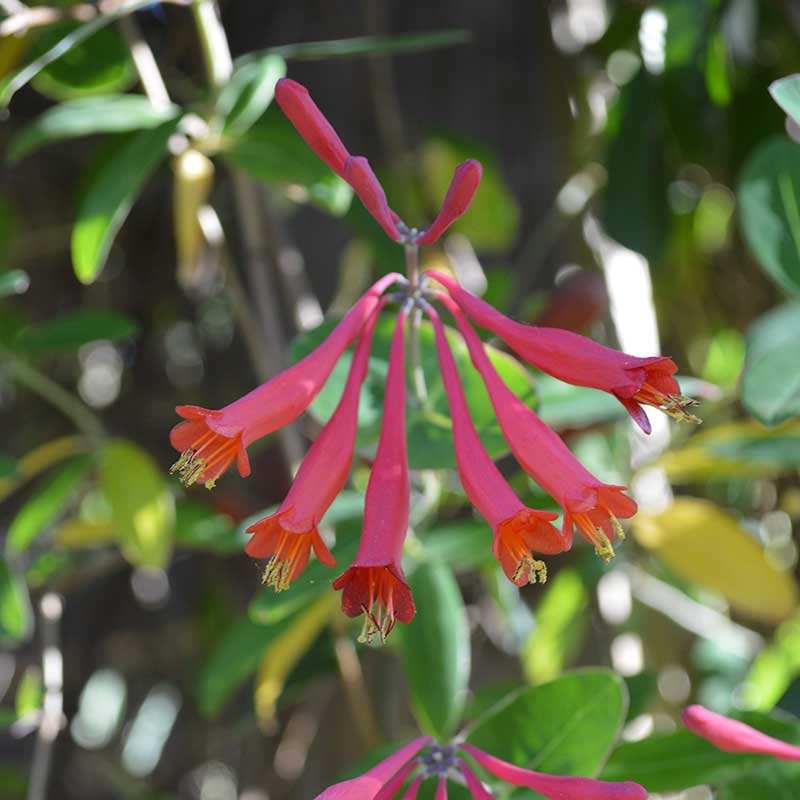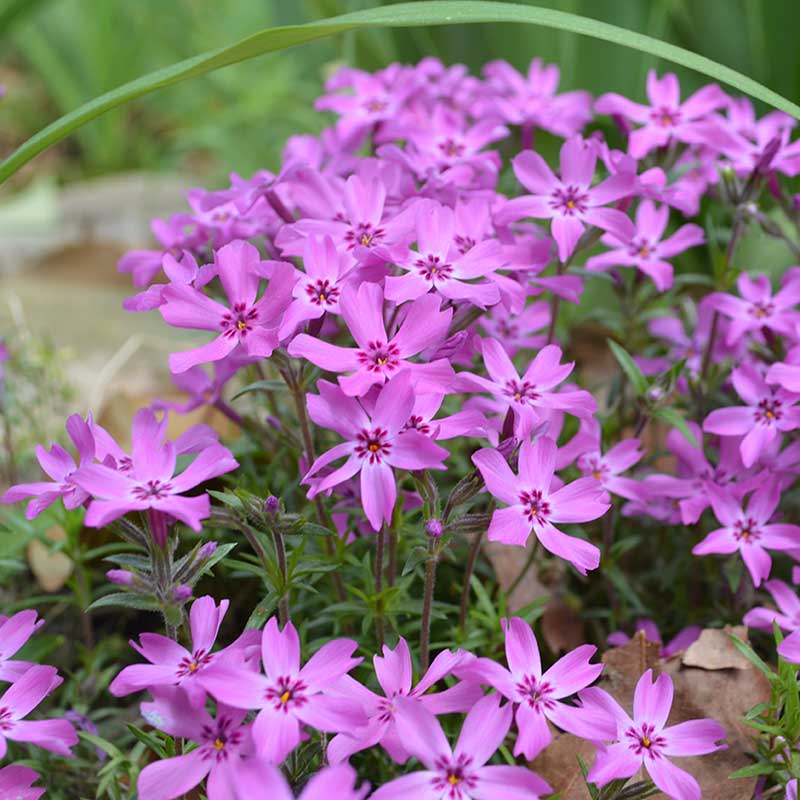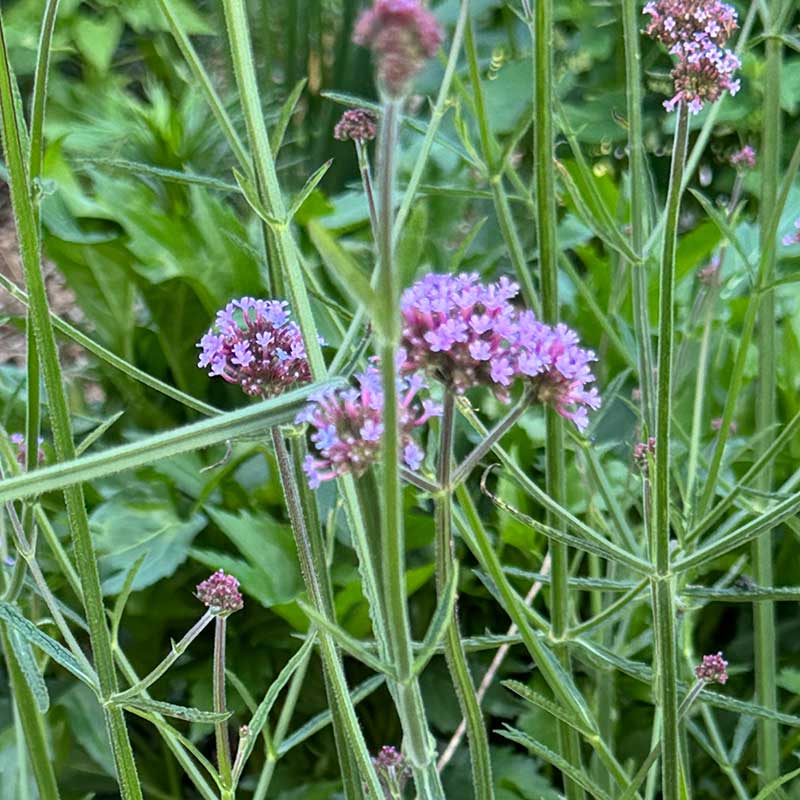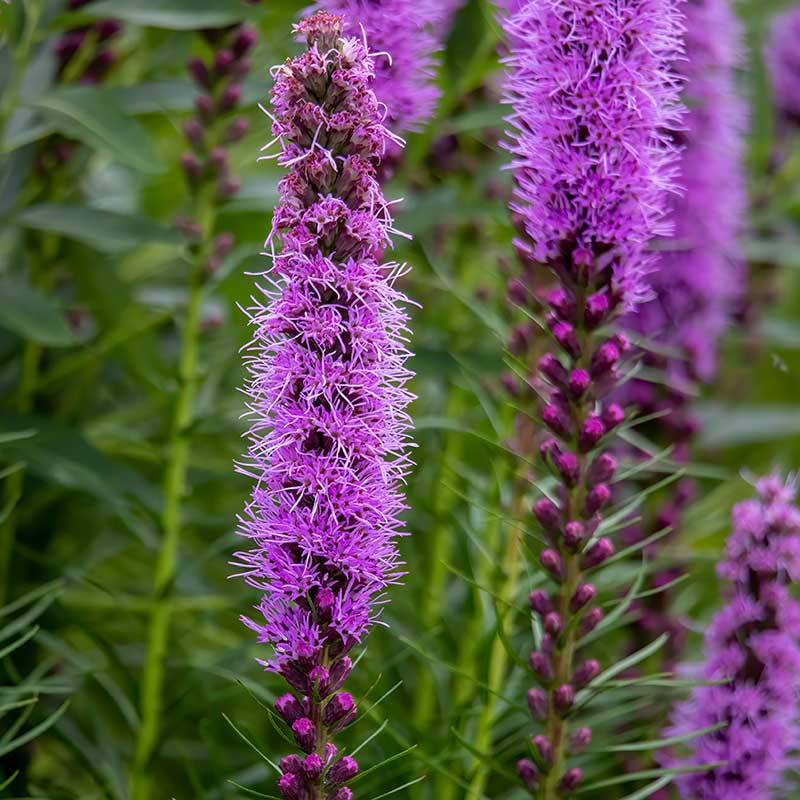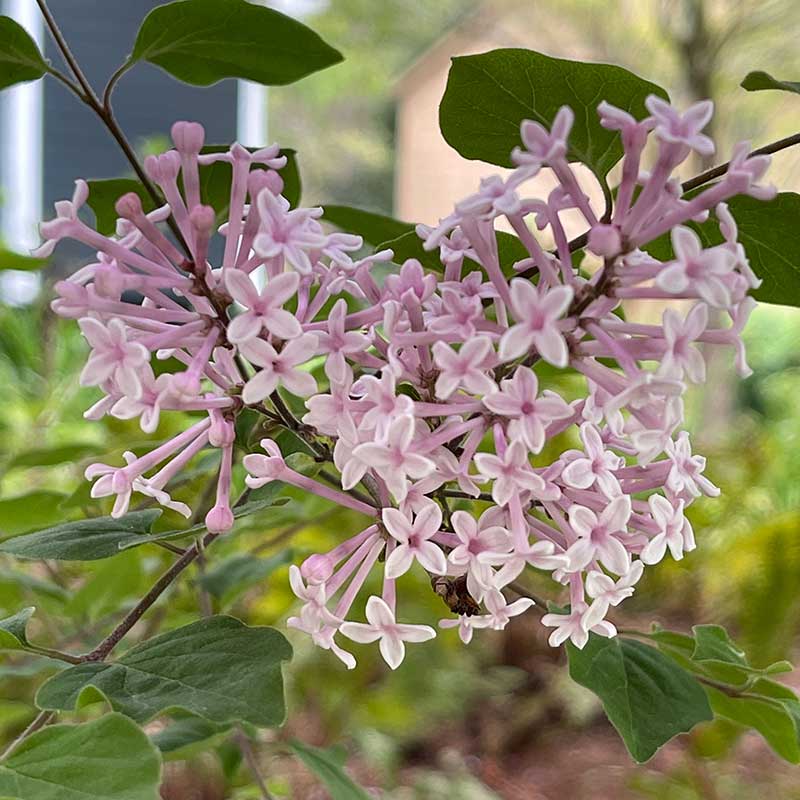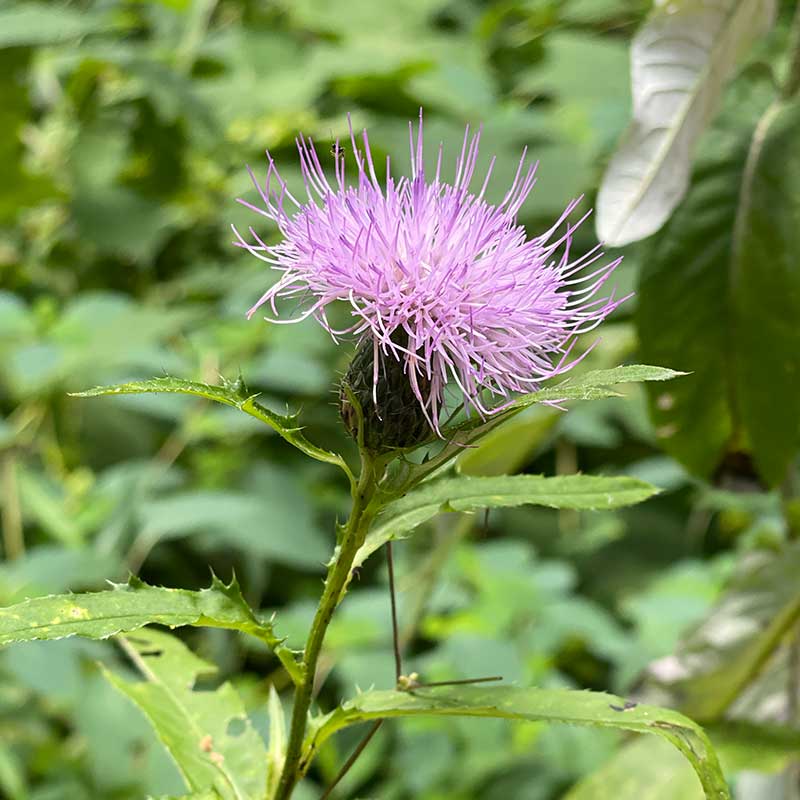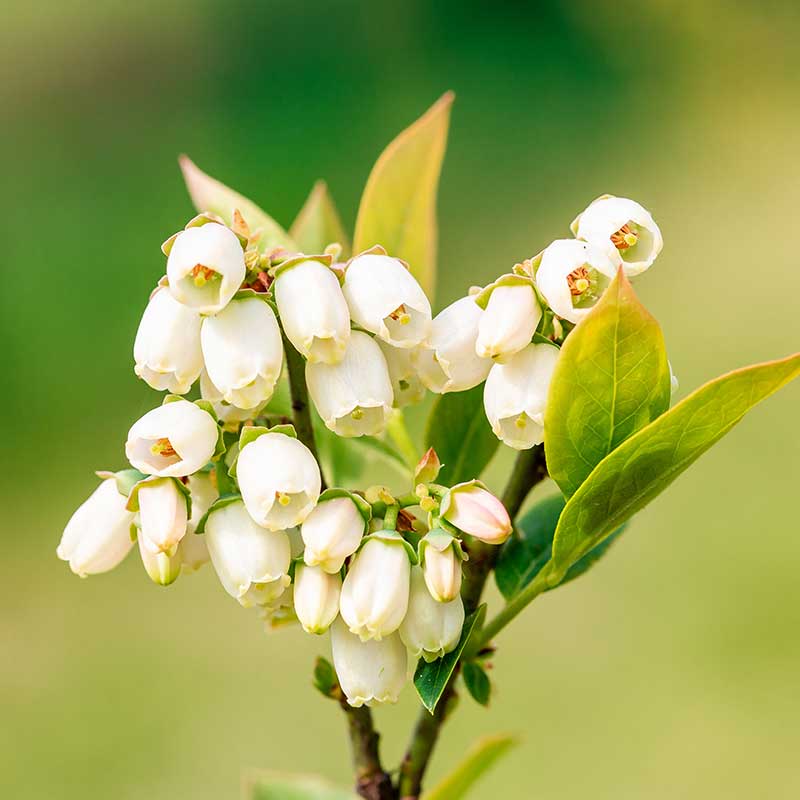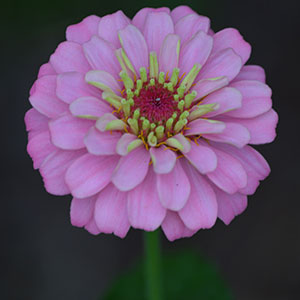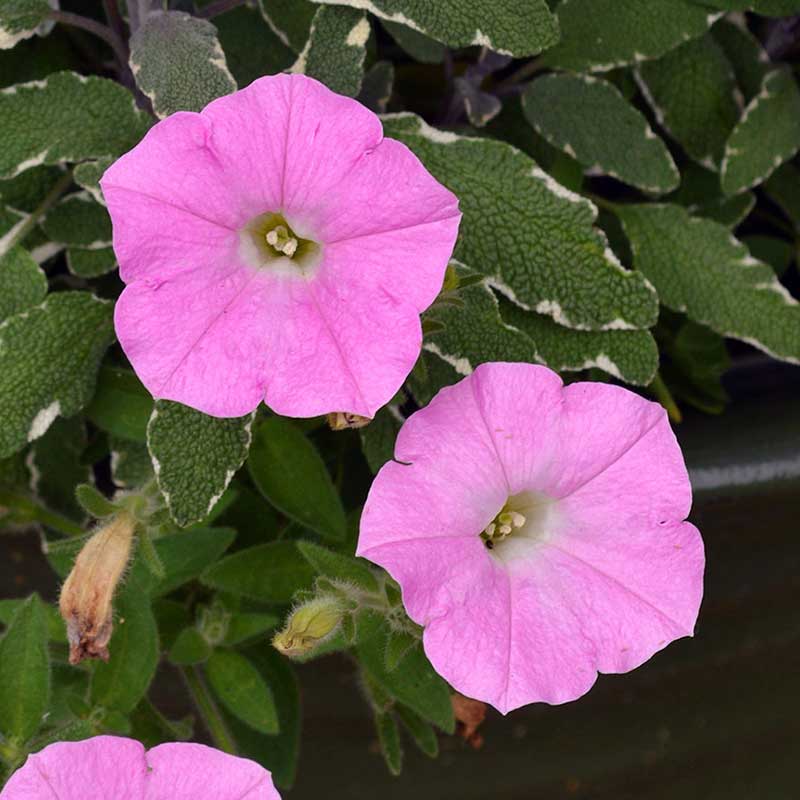There is one pollinator in your garden that might surprise you. It flies and moves just like a hummingbird, but it’s not a bird. It’s an insect – a hummingbird moth.
There are four hummingbird moth species found in North America, but you are most likely to see the snowberry clearwing or the hummingbird clearwing. These are common throughout North America.
You can see them in meadows, along the edges of forests, in open areas, and even in your garden. I often see them in my garden in spring. I guess it gets too hot in the summer for these little guys.
My creeping phlox blooms in early spring, carpeting the flower bed next to our front door. We have bright and pale pink blooms mixed in with the white ones. It’s quite a sight!
As I was admiring the phlox, I noticed some fast movement close to the plants. It darted in and out of the blooms, hovering in front of each flower for a few seconds.
This snowberry clearwing moth spent quite some time feeding at the creeping phlox, buzzing along the whole time and darting back and forth to the flowers.
How to Identify Hummingbird Moths
While the colors of these moths mimic bees – black, burgundy, and gold/yellow, they are feathery looking and rather plump. Their tails fan out as they balance in the air, and the two most common hummingbird moths have clear wings – you can see through them!
Like a hummingbird, it can hover in the air in front of a flower. It can fly backwards, dart around, and go almost any direction. It moves very quickly and is quite large for a moth – being about 1.5 inches long.
Click this link if you want to see how to tell a snowberry clearwing from a hummingbird clearwing moth.
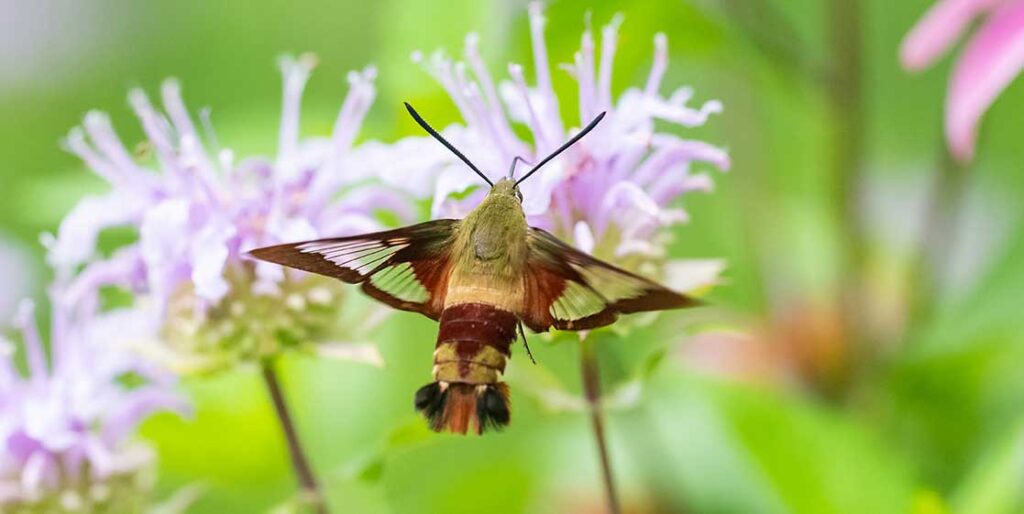
Flowers that Attract Hummingbird Moths to Your Garden
The clearwing moth’s long tongue unfurls and is used to gather nectar from flowers, typically tubular flowers. Not many pollinators can reach deep into these flowers, making the hummingbird moth an important pollinator for plants with these types of flowers.
If you want to get hummingbird moths in your garden, these are some of the plants to include for a food source:
Plants that Hummingbird Moths Need to Survive
If you want to include plants in your yard that help the hummingbird moth reproduce, these are the host plants for their caterpillars:
- honeysuckle
- dogbane
- hawthorn
- cherries
- plums
- snowberry
Fun Facts about Clearwing Moths
The hummingbird moth is in the sphinx moth family. While sphinx moths generally feed at night, hummingbird moths feed during the day.
So, keep an eye out for these chubby, happy little darting moths. They’re quite amazing!
Learn how to distinguish butterflies from moths with our quick guide.

